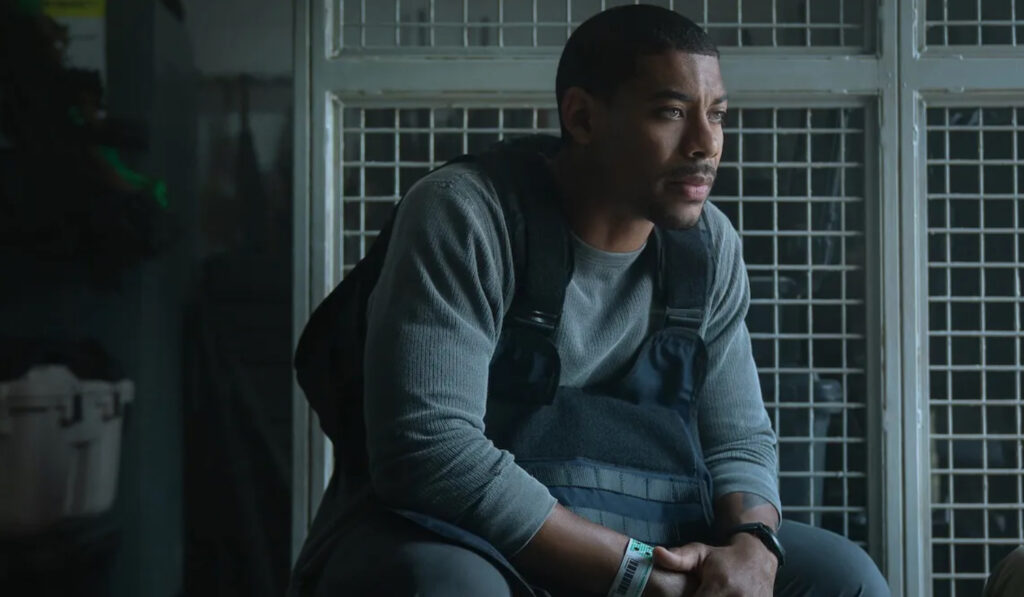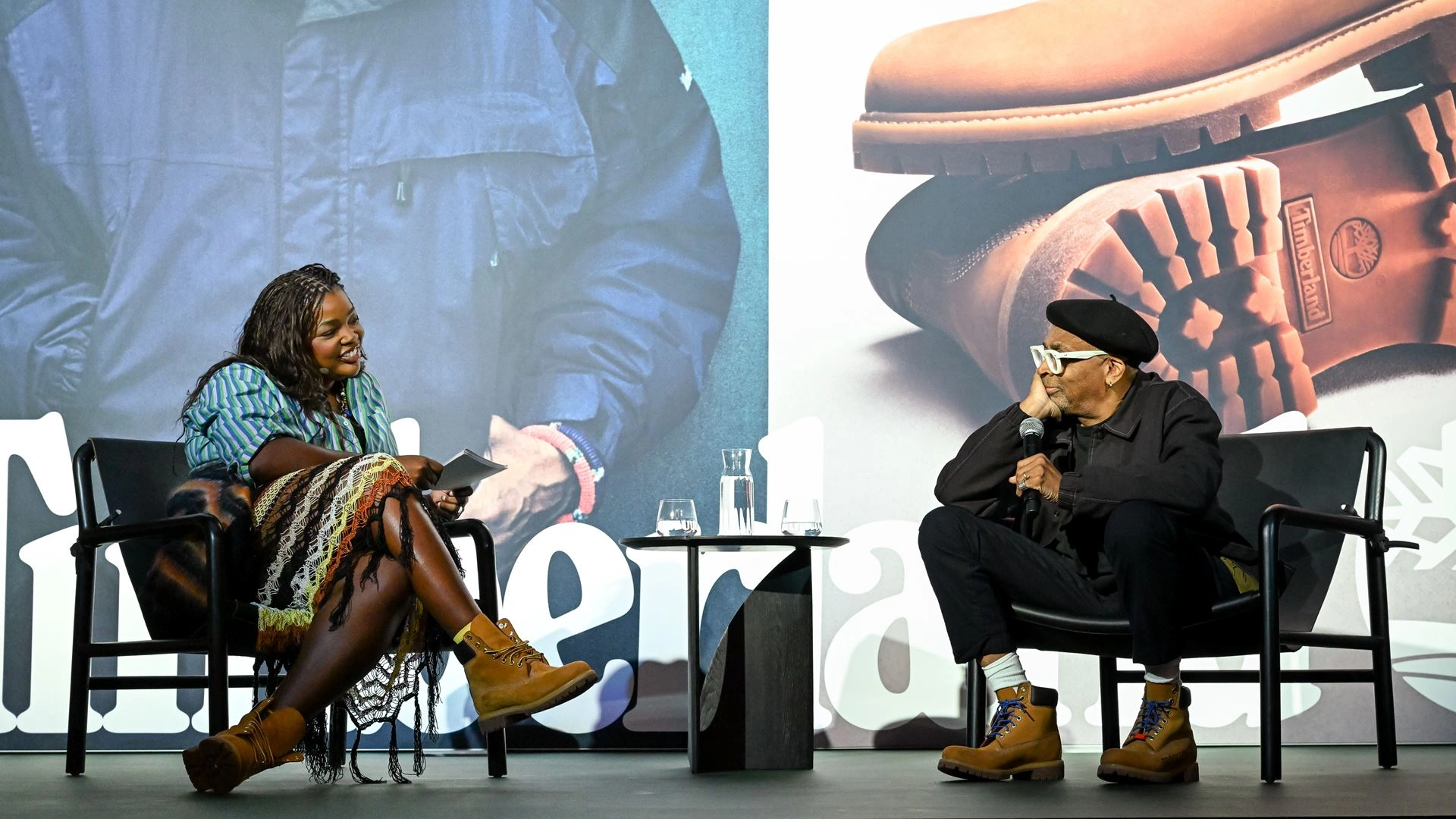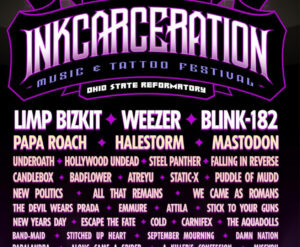It’s one thing to see your name plastered on film credits or to watch a trailer quiver across the internet. It’s another to step into a casino in Las Vegas and feel cameras, phones, and whispers trail behind you—not because you’ve chased fame, but because your work found its way into millions of living rooms. That was the moment when Jeremy Saulnier, the indie auteur behind Blue Ruin and Green Room, realized that Rebel Ridge had broken through the online echo chamber into the real world.
“I remember walking through the casino behind Aaron Pierre… heads would turn,” Saulnier told TheWrap in June 2025—recalling the visceral, unfiltered proof of the film’s resonance. This wasn’t hype. It was human notice. Suddenly, the metrics were moving from virtual dashboards to flesh-and-blood encounters—and it felt “very, very real.”
Genesis of a Netflix Phenomenon
Saulnier didn’t plan for this. In fact, when he pitched Rebel Ridge, he couldn’t have predicted it would land in Emmy talks. He “certainly didn’t intend” for his Netflix thriller to be discussed in the same sentence as television drama luminaries, but “there’s also some benefits”.
He’s no newbie to acclaim. His earlier work earned him cult legend status: Blue Ruin as gritty revenge poetry, Green Room as a visceral chamber piece, and Hold the Dark as brooding chaos. But even by his standards, the Netflix release—and the numbers—belied any loftiness in his aspirations.
According to TheWrap, Rebel Ridge recorded 129 million views, eclipsing big ticket titles like Beverly Hills Cop: Axel F . It hit #3 worldwide on Netflix across July to December and even dominated international charts—in Saudi Arabia, Israel, Ukraine, Morocco. It was a global pop culture ripple from a story rooted in American small-town injustice.
The Road That Led Here: Persistence Through Turbulence
Saulnier describes the journey of Rebel Ridge as “tortured.” Set to begin shooting in April 2020, the pandemic struck. Filming was postponed. Then, in May 2021, John Boyega, the originally cast star, exited suddenly. Saulnier was left scrambling .
He found his lead—Aaron Pierre, known for The Underground Railroad—and resumed production in April 2022 in scorching Louisiana heat. “The third time was indeed a charm,” he joked . His stamina, as he put it, was his superpower.
Even before full production, Saulnier avoided revisiting past drafts. He refused to “open the hood,” preserving the script’s early energy and avoiding creative drift. That discipline meant the film remained raw and urgent, rather than polished to irrelevance.
A New Standard: Realism Over Refinement
Saulnier’s ethos of information deprivation permeates Rebel Ridge. He prefers audiences to discover threads—legal, logistical, emotional—alongside his protagonist, Terry Richmond. It’s a tactic that feeds natural tension and avoids spoon-fed explanations.
He applied that same principle to the action—instead of slick choreographed set-pieces, the violence is purposely “sloppy, awkward,” a homage to unpredictable human conflict. His goal wasn’t spectacle, but emotional truth—a physicality that closes the gap between viewer and on-screen struggle.
Aaron Pierre performed most of his own stunts, including a one-handed gun-unload stunt that led to a small injury—“you need to be very precise,” Pierre recounted. It’s that precision within imperfection that gives Rebel Ridge its signature texture: action that feels lived-in and true.
Crafting a Modern Western
Several critics have connected Rebel Ridge to First Blood and classic Western tropes. Saulnier admits the influence: “Terry rides into town on a bike… less you know about his past, the better”. Yet, he was careful to sidestep cliché, even resisting a ‘Colonel Trautman’ line.
Instead, the film borrows narrative framework from Sergio Leone’s spaghetti Westerns—wide shots, silent build-ups, and bursts of tension. When blended with real-world pressure points—civil asset forfeiture, racial profiling, bureaucratic rot—the slow-build format becomes urgent and resonant.
A Star: Aaron Pierre’s Quiet Meteor
Saulnier’s instincts in casting paid off. He says, “Within minutes of our first Zoom, I knew he was the right Terry” . Pierre approached the role with an organic mix of stagecraft and physicality.
He performed hand-to-hand combat and stunts in brutal heat. His one-handed gun skill blew off digital effects in favor of tactile authenticity . Co-star Don Johnson, opposing him in tense interrogations, matched his gel .
The result: a reluctant hero, deeply honorable, pushed past boundaries. Saulnier’s goal was met: an emotionally charged, character-first action movie—the kind that invokes catharsis without manic bloodletting .
From Virtual Metrics to Emotional Currency
Moving from indie context to 129 million streams, Saulnier found validation in the real-world response. He told TheWrap, “So many people had just seen it… it was amazing” . In casinos, airports, on the street—“someone had just seen it”—and they looked. That’s the difference between viral success and lived recognition.
Another milestone? acclaim entered believer territory: Rebel Ridge picked up Best Movie Made for Television at the 2025 Critics’ Choice Awards and earned Gotham TV nominations . Saulnier, who once braced for every release as a career killer, instead found himself celebrating high-confidence completion for the first time .
Reflections on Control and Flow
Saulnier is deeply hands-on. He wrote, directed, produced, and edited Rebel Ridge. He knew the shots inside and out—enabling him to lead cleanup (and slashing of unnecessary stunts) with surgical precision.
He also knows when to trust others. Cinematographer David Gallego brought poetic realism to the southern landscapes while keeping with Saulnier’s naturalistic aesthetic . Producer and actor voices like Aaron Pierre and AnnaSophia Robb further shaped tone and pacing with authentic contributions.
That collaborative synergy, paired with Saulnier’s purpose-driven clarity, was the key to turning his signature aesthetic into a widely resonant product.
The Double-Edged Sword of Emmy-Aspirations
Saulnier “certainly didn’t intend” for Rebel Ridge to race toward Emmys — but doesn’t deny the upside . Prestige recognition comes with renewed attention, budget trust for future projects, and a path toward bigger-scale work.
That said, Saulnier balances excitement with caution. He is not averse to acclaim, but he’s defense-minded about preserving his creative independence. His past films were built in the indie trenches, and so far, he’s held onto that voice—even within industry frameworks.
The Road Ahead: Sequels, Genres, and Saulnierian Signposts
Is there a Rebel Ridge sequel brewing? Saulnier didn’t reveal specifics—but he did nod to Terry Richmond rolling into other towns, resisting injustice . Netflix is “excited.” Pierre is “in.” Saulnier has narrative threads to explore.
Still, the true win, for Saulnier, lies in shape-shifting expectations—he’s not locked into one genre or tone. Upcoming projects might see him return to horror, or stay in political drama. His wins are iterative: trust from studios, emotional capital from audiences, and an expanded set of aesthetic tools to choose from.
Impression
When Saulnier looks back on Rebel Ridge, he sees a film that struggled into life—delayed, recast, burdened by pandemic implosion—but emerged with power. He found creative clarity by avoiding overthinking, built tension through narrative restraint, and embraced messy emotion over refined spectacle.
When you scroll past Netflix charts, behind-the-scenes interviews, and fan reactions, you realize the true success lies in those Vegas glances. The moments when a random passerby looks at you as if to say, I just saw you on my screen. That is when virtual acclaim becomes very, very real.
For Saulnier, this isn’t just a watershed—it’s a signpost of what’s possible when indie vision meets global platform. It’s the promise that thoughtful storytelling can transcend echo chambers, that messy human truths still move people en masse—and that sometimes, fortune finds its way even to the most deliberate corners.
No comments yet.








